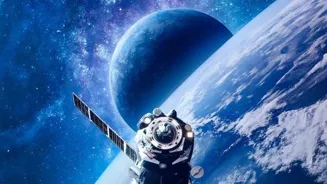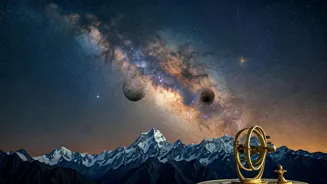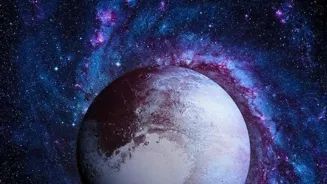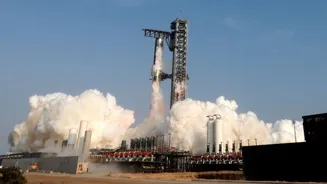Uncover 10 Mind-Blowing Solar System Secrets! Prepare for a cosmic journey full of surprises that will leave you amazed!
Our solar system, the cosmic neighbourhood we call home, is bursting with incredible
secrets and mind-blowing truths. You might think you know it all, with planets and stars being common topics in school, but trust us, there's plenty more to discover.
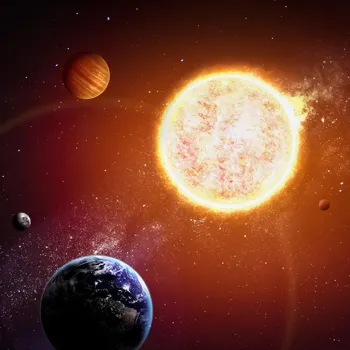
Buckle up, because we're about to take you on a desi-style tour of ten surprising facts that'll leave you absolutely gobsmacked! Forget everything you thought you knew; prepare for a cosmic journey that is truly out of this world!
Venus: The Planet of Retrograde Rotation (Ulta Ghumao!)
Imagine a planet where the sun rises in the west and sets in the east. Sounds like a Bollywood movie gone wrong, right? But that's reality on Venus!
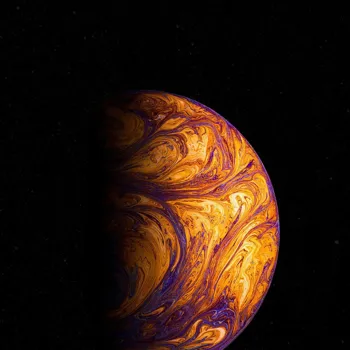
Unlike most planets in our solar system that rotate counter-clockwise, Venus spins in the opposite direction, a phenomenon known as retrograde rotation. Scientists believe this could be due to a massive collision with another celestial body billions of years ago.
Think of it like turning left when everyone else is going right – Venus is the ultimate rebel of the solar system. It sure makes you wonder how they manage their day-to-day work there. The thick clouds around Venus makes it even harder to visualise the backward motion.
Olympus Mons: Mars' Mammoth Mountain (Pahad Se Bhi Bada!)
Mount Everest, shmount Everest! Prepare to bow down to Olympus Mons, a colossal shield volcano on Mars, bigger than anything we have on Earth. This planetary giant stands a whopping 25 kilometers tall and spans 624 kilometers in diameter.

That's like putting the entire state of Maharashtra on a volcano! The sheer scale of Olympus Mons is mind-boggling, showcasing the incredible geological forces that shaped the Red Planet. Imagine the view from the top!
Well, you'll get to imagine for at least another twenty years; before humans set foot on Mars. But scientists have deduced that the red planet has been geologically active.
Saturn's Rings Aren't Solid (Chudiyaan Jo Toot Gayi!)
Those iconic rings of Saturn that made you go “wow”in your school books, turns out they aren't solid sheets of material. Instead, they're made up of billions of icy particles, ranging in size from tiny grains of dust to massive chunks bigger than cars.
These particles are constantly colliding and interacting with each other, creating a dazzling spectacle. It's like a cosmic ice-skating rink… a very, very crowded cosmic ice-skating rink. It is also hard to imagine that a planet so beautifully shaped would have so many underlying secrets.
The rings of Saturn are also not a single continuous ring, they have gaps in between them, dividing them into multiple rings.
Neptune's Supersonic Winds (Hawa Hawai!)
Ever felt like the winds are trying to blow you away during monsoon in Mumbai? Well, that’s nothing compared to Neptune! This ice giant experiences the fastest winds in the solar system, reaching speeds of over 2,000 kilometers per hour. That's faster than the speed of sound!
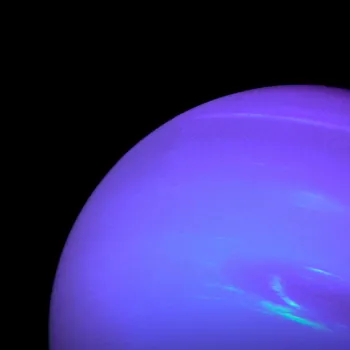
These supersonic winds whip around Neptune, creating massive storms and swirling clouds, a truly breathtaking display of atmospheric power. This speed of wind is hard to imagine even technologically. It sure also makes one wonder, if this kind of a wind speed is possible on earth.
Our world would surely be blown away.
Europa's Subsurface Ocean (Samundar Underneath!)
Beneath the icy crust of Jupiter's moon Europa lies a vast ocean of liquid water, potentially twice the size of Earth's oceans. Scientists believe this ocean could harbor life, making Europa one of the most promising places in the solar system to search for extraterrestrial organisms.
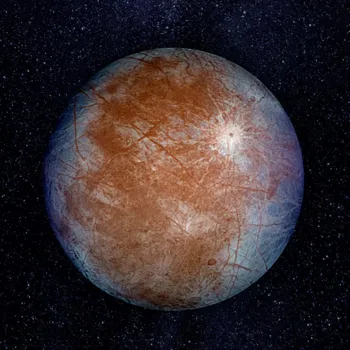
Imagine finding alien fish swimming beneath a frozen world! It's like a cosmic treasure hunt waiting to happen. Scientists have also been successful in finding oxygen on this moon of Jupiter. Thus there is an increased certainty for discovery of life, under the planet.
The planet itself is not habitable by any means.
Jupiter's Great Red Spot: A Never-Ending Storm (Kabhi Na Khatam Hone Wala Toofan!)
Speaking of storms, Jupiter boasts the Great Red Spot, a colossal storm that has been raging for at least 350 years. This swirling vortex is bigger than Earth itself and shows no signs of slowing down.
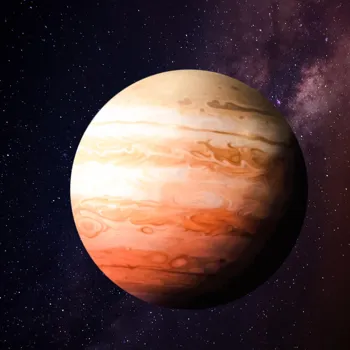
It's like a planetary-sized hurricane that just won't quit, a testament to the sheer power and longevity of Jupiter's atmosphere. Imagine being caught in that storm; even a drop of water would feel like a boulder!
It is baffling how a storm can last for so many years unhindered, when as Earth, storms calm down eventually. It also makes you wish the end comes soon.
Our Sun is a Middle-Aged Star (Adha Raasta Paar!)
Our life-giving sun may seem eternal, but it's actually middle-aged. At approximately 4.6 billion years old, it's about halfway through its lifespan. In another 5 billion years, it will swell into a red giant, engulfing Mercury, Venus, and possibly Earth. So, enjoy the sunshine while it lasts!
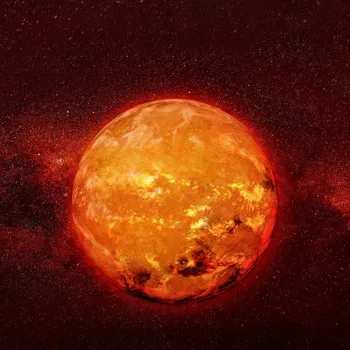
It sure makes one wonder, the earth that we live in now will no longer will be habitable. The Sun is after-all the center of the Galaxy for us. Without it, there is no life on earth. And thus we are all dependent on the Sun.
There May Be a Ninth Planet (Ek Aur Grah!)
While Pluto may no longer be considered a planet, scientists suspect there may be another, undiscovered planet lurking in the outer reaches of our solar system. Nicknamed "Planet Nine," this hypothetical world is predicted to be several times the size of Earth and located far beyond Pluto.
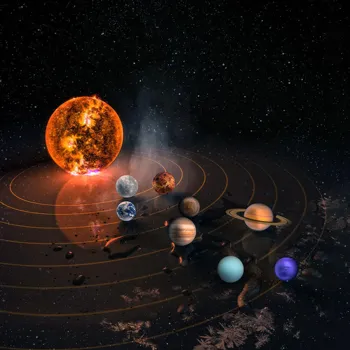
The search for Planet Nine is on, and its discovery would revolutionize our understanding of the solar system. And it looks like even after decades scientist are still baffled by whats outside our planet. It may or may not be Planet nine. But either ways, there is still something to discover.
Comets are Cosmic Ice Bombs (Barf Ke Gole!)
Ever seen a shooting star streaking across the night sky? Chances are, you witnessed a comet burning up in Earth's atmosphere. Comets are icy bodies that originate from the far reaches of the solar system.
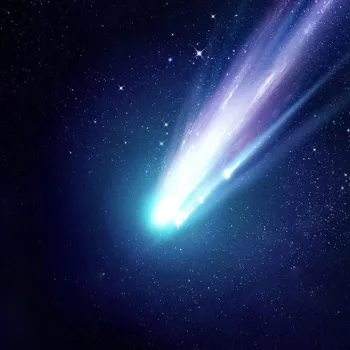
As they approach the sun, they heat up and release gas and dust, creating spectacular tails that can stretch for millions of kilometers. Imagine a cosmic ice bomb exploding in space, leaving a trail of dazzling light. It is amazing to spot comets, with their long tails, passing the earth.
Asteroids: The Solar System's Leftover Building Blocks (Bache Hue Tukde!)
The asteroid belt, located between Mars and Jupiter, is a vast collection of rocky debris, remnants from the solar system's formation.
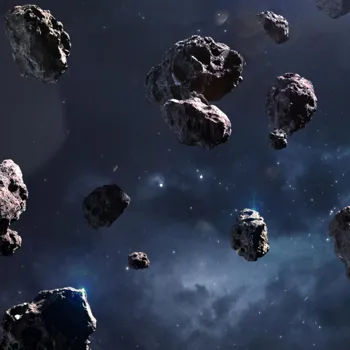
Ranging in size from tiny pebbles to massive asteroids hundreds of kilometers across, these space rocks offer valuable insights into the early history of our solar system. It's like a cosmic construction site filled with leftover building materials. Scientists are still deciphering what lies beyond our Solar System
AI Generated Content. Glance/InMobi shall have no liability for the content